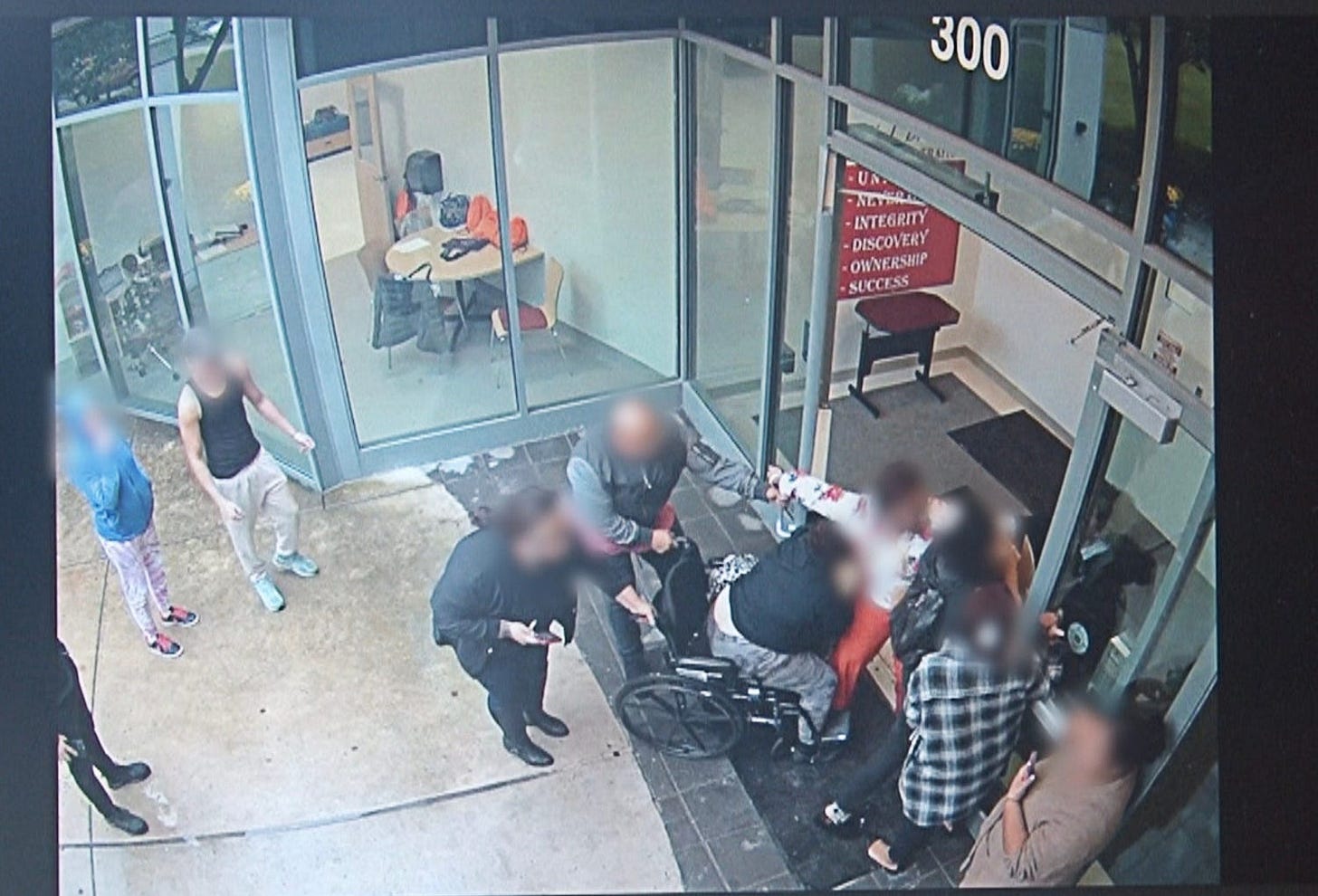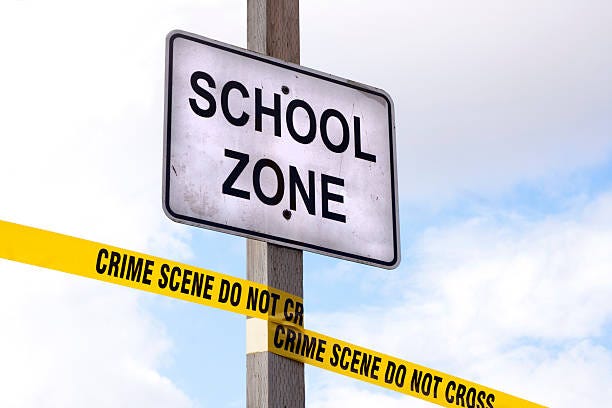Delaware Online released a two-part series into the delayed police response to a Delaware school death threat, and the aftermath.
Ultimately, and thankfully, the threat was a hoax. The following day the police had determined that a 12-year-old girl, a former student, had called in the threat.
It is made clear that there were major communication issues as well as other injustifiable excuses, including a failure to properly update the school’s address in the dispatch system.
Another critical error was that the director’s first call was to a state police lieutenant who sometimes worked at the school, but had called out sick that day!
There is enough blame to go around, but the fact remains:
Had this not been a hoax, there could of been tragic consequences!
Below, I highlight content from the Delaware News Journal’s detailed two part series.
Part I
A caller threatened to kill Delaware students. It took police 76 minutes to respond.
A Delaware Online investigation pieced together the series of missteps by 911 employees and Delaware State Police’s handling of the incident
March 20, 2023 | Delaware News Journal
Part II
Slow to respond, slow to answer questions: How rift between state police, school worsened
A lack of information from Delaware State Police has shattered any trust the Academia Antonia Alonso Charter School community once had.
March 20, 2023 | Delaware News Journal
Despite 19 calls to 911 from teachers, administrators and parents, it would be 76 minutes before law enforcement arrived
A caller, disguising their voice, called Academia Antonia Alonso Charter School in Christiana and threatened to kill all 720 students as well as their executive director.
It took police 1 hour & 16 minutes to respond.
Fifteen minutes passed. No help arrived. Thirty minutes. Still no sign of police.

Using hours of surveillance video, a fight for 911 call records and numerous interviews with police, parents and school administrators, a Delaware Online/The News Journal investigation pieced together the series of missteps by 911 employees and Delaware State Police’s handling of the incident.
While experts interviewed by Delaware Online/The News Journal agreed that mistakes occur in emergency responses, they focused more on the agency’s lack of transparency in the aftermath, especially given the increased scrutiny of police responses to recent school attacks such as in Uvalde, Texas and Parkland, Florida.
In an era where violence in schools feels more like a question of when and not if, Academia Antonia Alonso and state police have been thrust into an increasingly-frequent national conversation: Who is responsible for keeping students safe and what happens if the threat becomes real?

With a lockdown in place and a 911 call made, the hope is that police respond quickly, Dorn said. Once officers arrive, they should work with educators to assess the threat, determine its credibility and formulate a plan for dismissal or determine other safety actions that need to occur before students are let out.
That's how the response should go, Dorn said. But that wasn’t the case here.
Neither the operator nor the dispatcher noted the incident was a school-related threat, nor did they document that Alonso was waiting for police to arrive before dismissing students, state police said.
Academia Antonia Alonso’s new address was never updated in the dispatch system.
A second dispatcher who reviewed the call reclassified it from priority two – in-progress – to priority three – not in progress.

“At that point, I said to myself, ‘I'm alone – they’re not coming,’” Alonso said. “And meanwhile, the parents were getting more and more and more aggressive.”
Over the next 15 minutes, surveillance video shows parents banging on the glass and yanking at the doors. Inside, a dean who would later be shoved by a parent phoned 911.
Anxiously, she asked the dispatcher to send police quickly. The school couldn’t let the kids out with the parents being violent outside, she explained.
The response, she said, was “cruel.”
She recalls the dispatcher telling her it was no surprise the parents were being violent.
“That’s because you’re keeping their children hostage,” the dispatcher said, according to 911 audio provided by state police.

They were tired of waiting – it had been more than an hour since they were notified of the lockdown and they had no new information. Police were still nowhere to be found.
Within a day, police had determined that a former student, a 12-year-old girl, had called in the threat.
In a bare-bones news release published after the arrest, state police wrote that the call came in at 3:25 p.m., about 10 minutes after the receptionist reported receiving the call. It also said that troopers “responded to the school and secured the scene.”
The release did not note that it took nearly 80 minutes for police to arrive, nor did it mention the chaos that ensued as parents and staff waited.
As a Delaware State Police major opened with a timeline of events, he repeated the incorrect time provided in a news release published soon after the incident, according to meeting minutes.
Much to the school community’s surprise, he also added another piece of wrong information: There was no initial 911 call, he said.
State police had just told a group of worried parents the director of the school hadn’t dialed 911. Instead, they said, Alonso “chose to call” the non-emergency line.

School leaders weren't notified or invited to participate in the next meeting Delaware State Police had about the incident.
Several parents said the May 2022 shooting at Robb Elementary School in Uvalde, Texas was on their minds when they learned of the lockdown. But so too were the shootings at Santa Fe High School in Texas, at Marjory Stoneman Douglas High School in Florida, at Sandy Hook Elementary School in Connecticut.
Michael Dorn, a Georgia-based school safety consultant, said “only a very small percentage” of mass-casualty attacks on schools occur in the U.S.
Yet because information is accessible in seconds due to social media and round-the-clock news, “the perception of Americans is that we've got this new wave of attacks, which is not true.”
Most deadly attacks were in the 70s and 80s, Dorn said, "but people didn’t always know it because we didn't have CNN, we didn't have the internet or the 24-hour news cycle.”
Learn what went wrong on Oct. 24 and come up with a plan to prevent it from happening again.
Delaware State Police told Delaware Online/The News Journal it agreed to the town hall “in the spirit of sharing the details that were known at that time and to commit to how the information would be shared as the investigation was concluded.”
Kenneth Trump, who has worked in the school safety field for three decades and has served as an expert witness in civil trials following the mishandling of school attacks, echoed Dorn.
Without updates, Trump said, the void is often filled by incorrect information or people’s assumptions. That can then lead to a crisis in communication that is just as damaging – if not more so – as the initial incident.
There have been too many instances where our children are in put harms way due to either incompetence or woke policies. Ask questions, stay vigilant, and remain engaged in every aspect of your child’s life.














